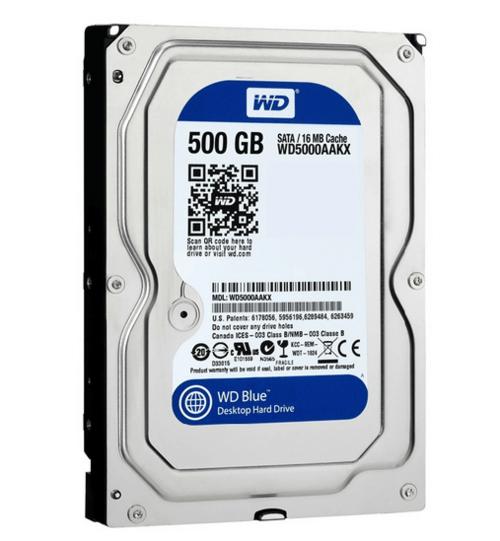Understanding and Functions of the Hard Drive and its Types
A hard disk is one of the main components of a computer. The main function of the hard disk is to store and read data on the device.
Hard drives or often also referred to as HDDs are installed in desktop computers, mobile devices, electronic devices, to corporate data centers.
This magnetic disk data repository can be used to store operating systems, software programs, and other files.

What is Hard Drive?
Hard Disk Drives, which are often also referred to as hard drives, hard drives, and HDDs, are non-volatile data storage devices.
Non-volatile storage means the storage device will retain the stored data even when the primary device is turned off.
Generally, the hard drive is installed internally in a computer device. This component is attached directly to the disk controller of the computer motherboard
This hard disk component contains several disks (disks). Later, the data will be saved to disk using a magnetic head that moves quickly when the disk rotates.
Storage devices such as hard drives are indeed needed to install operating systems, run programs & applications, and, store documents.
Without non-volatile devices such as HDDs that can store data after power off, computer users will not be able to store anything on the computer.
This is why every computer needs at least one storage device to store data permanently.
Well, in 1953 the lows. That's where hard disks are found. When it was first sold to the public in 1956, HDDs were the size of a refrigerator, you know, Golden friends!
The hard drive can only store 3.75 MB of data. Fortunately, these hard disks continue to evolve along with technological developments. In the mid-1980s, the 3.5-inch and 2.5-inch form factors were introduced and are the standard for use in computers today.
How Hard Drives Work
Basically, a hard disk consists of several disks made of aluminum, glass, or ceramic. Next, the disk is placed on a shaft. The disc rotates with a motor connected to the shaft. Inside the hard disk case is a read/write needle that magnetically records information to and from the tracks on the disk using a magnetic head. Hard drives also have a thin magnetic layer on them. The motor inside rotates the dish at up to 15,000 revolutions per minute. As the platter rotates, a second motor controls the position of the read and write needles which record and read the information on each platter.
Hard Drive Function
After studying the meaning and workings of a hard drive, of course, you can already guess the main hard drive function, right? Basically, a hard drive is a secondary storage device designed to store data permanently. This secondary storage device includes a larger storage capacity compared to the primary device. Hard drives can store various types of data. Starting from the operating system, software, and other computer files.
Some other hard drive functions are:
Saving Data Software
Another hard disk function that is almost the same as its main function is to store third-party software data on the computer. Data storage from this software is done so that the software can be opened and run on a computer device.
Backup Data
In addition to storing data, some people use the hard drive to back up their websites and computer files. Thanks to the large hard disk storage capacity, this secondary storage area is indeed suitable for backup. Generally, when your computer is damaged, the files in this second storage area will remain safe and accessible. The good news is the hard drive also provides a portable external type, you know, Golden friends! So you can save data on different devices.
Types of Hard Drives
Well, here are the various types of hard drives available today with different interface technologies and storage capacities.
SATA
SATA (Serial Advanced Technology Attachment) is a serial interface used to connect hard disks. Thanks to its very cheap price, SATA is often used in PC devices as well as servers. The speed of the SATA interface is up to 600Mb/s with a throughput of 6Gb/s, you know. HDD with SATA is suitable for:
Workflow operations, for example, video coding
Data storage
Backup backup system
The file server is large but does not load high
SAS
SAS-(Serial Attached SCSI) – is a serial interface used to connect hard disk drives based on the SCSI command set.
The SAS interface operates at speeds up to 1,200Mb/s. with throughput up to 12 Gb/s. Unfortunately, the price of SAS is more expensive than SATA.
HDDs connected via the SAS interface are suitable for high-speed operations with multiple rewrite cycles as well as:
Database management system (DMS)
Highly loaded web server
Distributed system
Systems that handle multiple requests such as terminal servers, etc.
Hard Disk Capacity
Some of the most common hard drive storage capacities are:
16GB, 32GB, and 64GB — the capacity of this hard disk range is included in the lowest group. Usually found in older and smaller devices.
120GB and 256GB — hard drive sizes in this range are generally considered entry-level for HDD devices such as laptops or computers.
500GB, 1TB, and 2TB — hard drive storage of this one has a capacity of about 500 GB. Often considered a decent standard for the average user.
More than 2TB — hard drives over 2TB are suitable for users with high-resolution files.
Source: https://labkom99.com/
0 Response to "Understanding and Functions of the Hard Drive and its Types"
Post a Comment